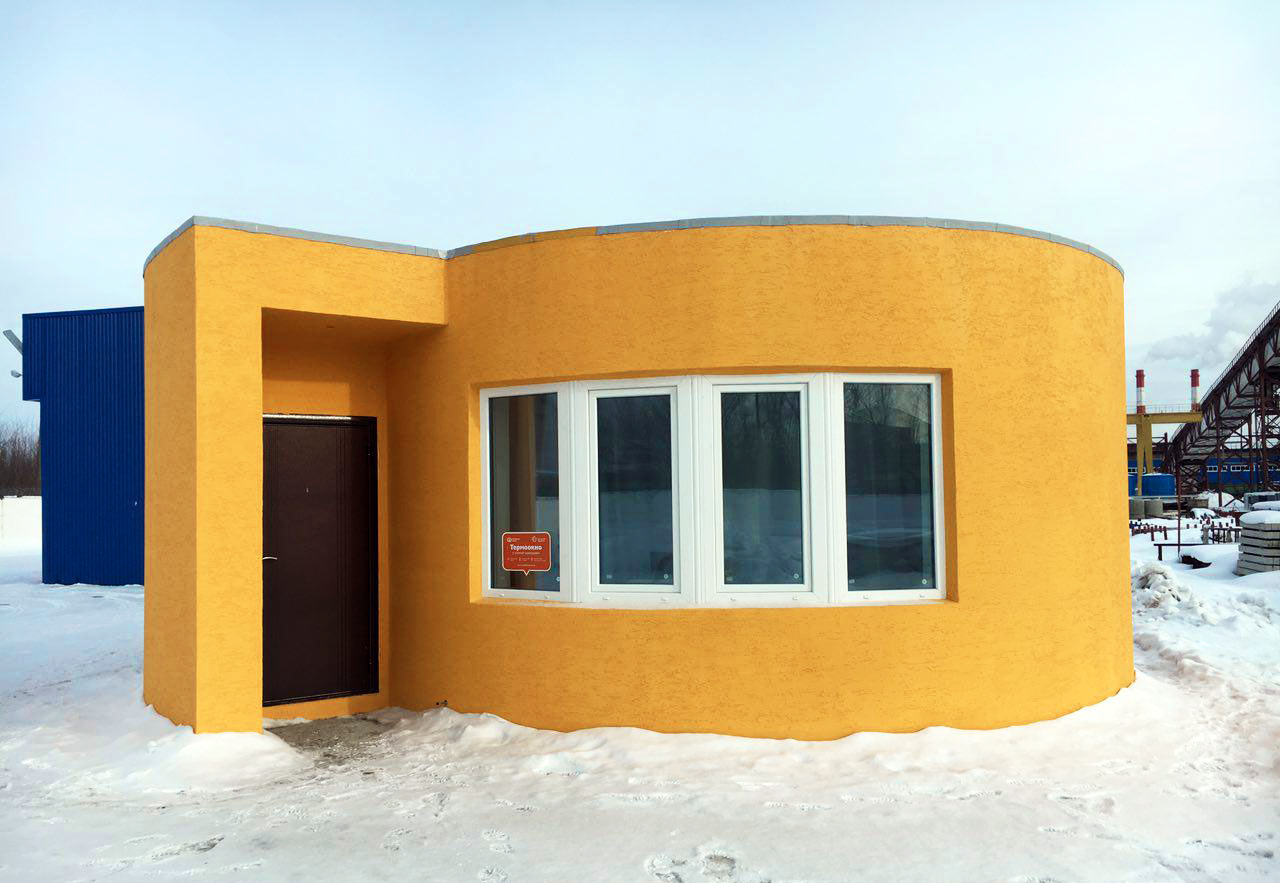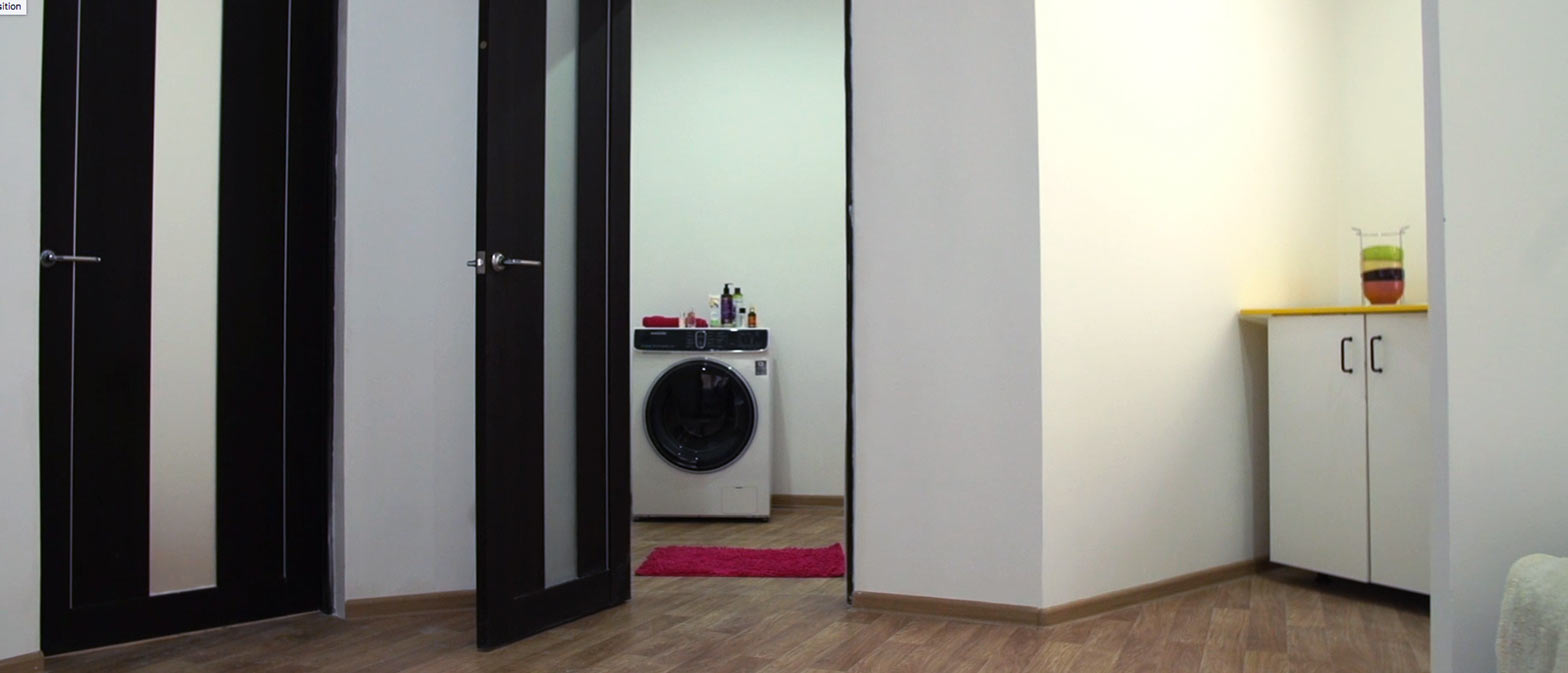In Russia, printed the first residential building of concrete for 594 000 rubles

More than 70 years ago, the United States created the first machine for fast (24 hours) pouring concrete houses, which was designed by engineering genius Robert Gilmore Létorno . Here is a video from 1946 . In general, this idea of Thomas Edison is over 100 years old ( patent ). Over the decades, the technology of printing from concrete has changed, they began to apply full-fledged 3D printing on individual projects. Now these houses look much prettier. For example, in February 2017, a residential house was printed in Stupino near Moscow on the construction printer Apis Cor. This is the first house in the Russian Federation, printed entirely, and not assembled from printed panels.
The building area is 38 m². The total cost of construction "turnkey", including the foundation, walls, floors, roofing, wiring, doors and windows, exterior and interior decoration, amounted to 593,568.19 rubles ( detailed estimate ), but this is without the cost of the work of some professionals.
The printer is quite mobile. The loader brings it in the back - and sets it on the prepared foundation at the construction site.
')

The printer is connected with a hose to a large concrete mixer, that is, an automatic system for mixing and feeding the mixture. It looks like this.

Then the work begins. All work on the construction of the house took about two months in Stupino. The project began in December 2016 , finished in February 2017. The advertised 24 hours is only the pure Apis Cor. It was included at different stages for printing self-supporting walls, partitions and building envelopes.

The device has an interesting design. It is located on the movable bracket in the center and prints around it, gradually rising. After the printing of wall structures is completed, it is removed by a crane - and it continues to work outside.

The device itself in the process consumes 8 kW, so you need to provide it with electricity during construction.

The cost of printing a house made of concrete is significantly cheaper than building a conventional “box” of blocks.

In addition, these houses have a lot of additional benefits, which makes them truly unique.
1. Almost arbitrary shape of the walls. Rounded walls with any angles. Here is the perfect accuracy of construction, a drunken mason will not exactly ruin your project. The printer has a built-in system of automatic alignment on the horizon and a stabilization system.

2. The walls immediately after processing are ready for painting with decorative plaster. You can walk with a roller in one day and paint the house in arbitrary colors, and then repaint your mood at any time. Plastering with level and beacons is not required. There is an additional reduction in the cost of finishing work. This applies to both internal and external decoration.

3. The shape of the walls, the size and arrangement of the windows you can ideally plan, taking into account the surrounding landscape and light. By the way, there is an assumption that the walls on one side can be made slightly tilted in order to further increase the illumination. However, designer fantasy is limited to the available forms of double-glazed windows, because here you will not manage with ordinary glasses, you need to put double-glazed windows so as not to freeze in winter.

Among the flaws that come to mind, we can mention the flat roof.

It is clear that the developer guarantees: the roof effectively withstands high snow and operating loads. But it seems that on such a roof can accumulate standing water with all the consequences (more precisely, not the ensuing consequences). To prevent this from happening, a special wedge-shaped thermal insulation PIR Slope is used on the roof - a ready-made constructor to create the desired slopes and counter-slopes. They say that precipitation will be effectively discharged from the surface of the roof, but still somehow unusual.

How the insulation between the inner and outer walls will work is also interesting to check. Now the developer is experimenting with two ways of warming: from the Logicpir crumbs on one part of the house (thermal conductivity 0.022 W / m * K) and the polyurethane fill composition on the other (0.023-0.025 W / m * K). Warming was carried out simultaneously with the printing of structures, which significantly increased the construction time.

Well, not everyone will like the small size of the house - after all, not everyone is ready to live in a one-room apartment, a small studio. Although this option for 38 m² is quite suitable for a lonely person to live. In addition, as mentioned, the technology allows you to build houses and larger.



Yes, and for the round house, the TV will have to buy a concave, if you want to play computer games on the big screen.

With this technology, you can print and three-story houses, but they will cost much more than $ 10 thousand.
Of the other drawbacks - restrictions on the dates of construction. The use of concrete mix used as “ink” is possible only at a temperature of 5 ° C above zero. So if you do not want to put an awning with a heater - then building in the winter is impossible. In the future, they promise that the printer will learn how to work with geopolymer concrete from natural components - such material can be printed at lower temperatures. In addition, it exceeds the usual concrete in other ways.
In the end, the house is definitely no place to install a boiler or other heating system. Probably the only option for life in the winter - electric heater.
The estimate of the first house came out in the region of $ 10,000, although the estimate does not include the work of all specialists. The estimate includes the installation of window and door blocks, wall decoration, facade painting, drainage device, waterproofing device, thermal insulation device, but other works are not taken into account. Probably, with these works, the house "turnkey" will be released twice as expensive, that is, approximately $ 20,000.
| Foundation | 14 819 rub |
| Walls | 95,629.64 rub |
| Overlap roof | 144 267.55 rub |
| Wiring | 12,650 rubles |
| Doors and windows | 211 052 rub |
| Exterior finish | 46 250 rub |
| Interior finish | 68 900 rub |
But the contractor notes that this demonstration project used expensive materials. If you use cheaper materials, the cost will drop to about $ 8,100.
The authors of the project from the companies PIK and Apis Cor state that this demonstration house on the territory of the Stupinsky cellular concrete plant is the first residential building in Russia printed entirely on the printer.
UPD: "We disassemble the printed house "
Source: https://habr.com/ru/post/402107/
All Articles